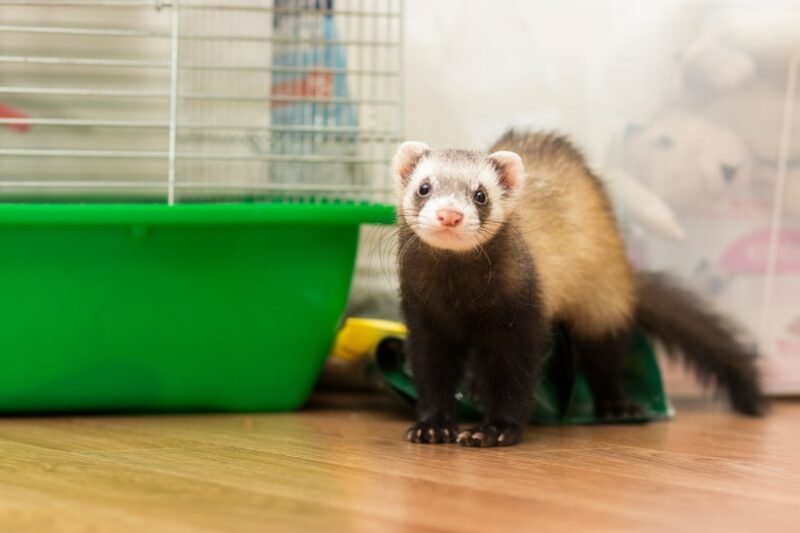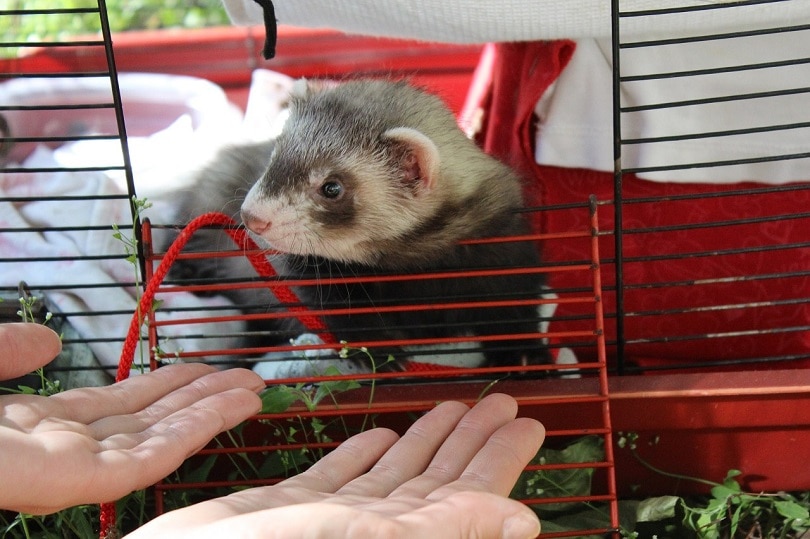
Ferrets are very interesting animals because they don’t look like pets, they look like wild animals. And yet, they are very popular among pet owners. What do we know about them? Where do ferrets come from? According to genetic research, ferrets’ ancestors come most probably from Europe. Keep reading to learn all you can about ferret origins.
What Is a Ferret?
A ferret is a small carnivorous mammal that comes from the Mustelidae family, which includes around 60 species like ferrets, polecats, otters, weasels, stoats, badgers, and martens. The Latin name for a ferret is Mustela putorius furo.

Where Are Ferrets Originally From?
There are a couple of theories about where ferrets come from. It is hard to name their origins with 100% certainty because their remains decompose rather quickly. Scientists may only gather data on the physical appearance and genetics of living animals. They were later compared to Eastern and Western European polecats and black-footed ferrets. As a result, two theories were developed about ferrets’ origins.
1. European Polecat Theory
According to research, European polecats are the most likely candidates to be ancestors of domesticated ferrets. Scientists compared genetic materials of polecats and ferrets and they saw similarities in their gene pool. Additionally, breeding a polecat with a ferret will create healthy kin. It is actually a common thing for a good ferret breeder to use a polecat. That is a way to expand genetic ferret material. The descendant of a polecat and a ferret is called a hybrid. It can manifest both the tameness and affection toward humans of a ferret, and the agility, strength, and energy of a polecat.
2. Black-footed Ferret
There was a theory that the real ferret ancestor is a black-footed ferret. But, after genetic testing, it was proven that they don’t share enough genetic material to prove that theory. They are simply two different species under the same Mustelidae family.
Ferrets Origin and History Timeline
The first time in history someone mentioned ferrets was almost 2,500 years ago. The Greek author Aristophanes mentioned them in 450 BC and only a hundred years later, in 350 BC, Aristotle mentioned them again. We can’t really use this information as the starting point because of their existence since these documents were in bad shape, and were thus classified as incomplete.
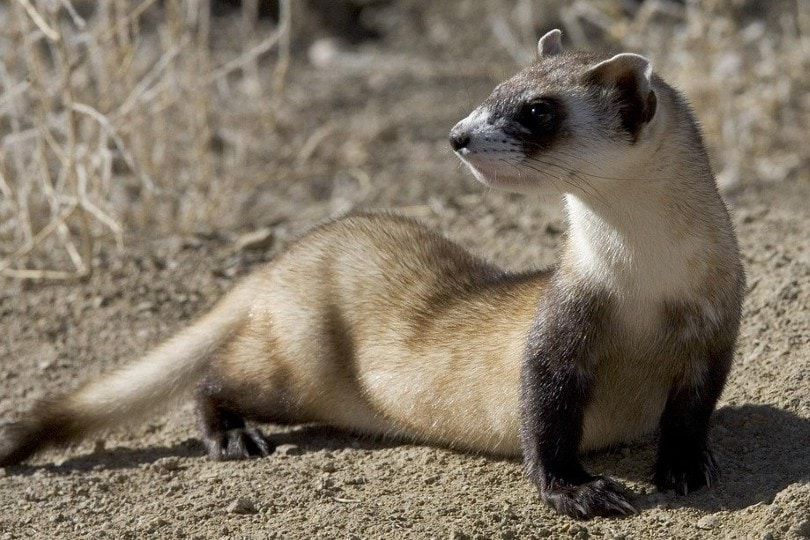
Strabo’s Documents
Greek geographer Strabo wrote about rabbit overdevelopment on Balearic Islands around 63 BC and 24 AD. Rabbits had overbred on the islands and started destroying crops which eventually led to famine. One of the best solutions for rabbit overpopulation was in the form of a small, long-bodied animal bred to hunt down rabbits. Strabo described ferrets as muzzled Libyan animals, small enough to fit in the rabbit hole. Ferrets would chase rabbits out of the hole and dogs would hunt rabbits down once they exited the hole. This is a very similar practice to the current hunting method that involves ferrets.
Since then, ferrets were mentioned more and more in the same context – hunting rabbits. This document also gives us another theory that ferrets originate from the Mediterranean, but for now, that is just a theory due to the lack of additional proof.
Ferrets Conquer Medieval Europe
As time passed, the need for ferret-hunting abilities grew wider. In the 1200s, ferrets were spotted as small hunting machines in Germany and England. In 1281, “a ferreter” became a part of the Royal Court in England, proving that ferrets were needed and people who owned them were respected. Ferrets weren’t only used to hunt rabbits, they were used to hunt other pests like rats and mice.
In 1384 King Richard issued a degree in which he allowed one of his clerks to use ferrets when hunting rabbits. Another pretty interesting document is from Zurich where Gerner mentioned the first albino ferret in 1551. He described it as “the color of wool stained with urine.” The Medieval literature from Europe is filled with ferrets and they all have a few similarities. They describe them as rabbit hunters and they all mention their small size and long body.
The Most Popular Pest Control
Ferrets were still far from being a pet at this point, but their popularity continued to grow. In the 18th century, thanks to overseas travels, ferrets expanded their work to ships. Before them, cats and dogs protected ships from rats and other pests. But many people had trouble with them. Dogs were too loud and too big to follow rats, while cats were just being cats, so they hunted only when they felt like it. Ferrets, thanks to their high prey drive and small size, were perfect as pest control. They could follow rats into tight spaces and kill them within minutes.
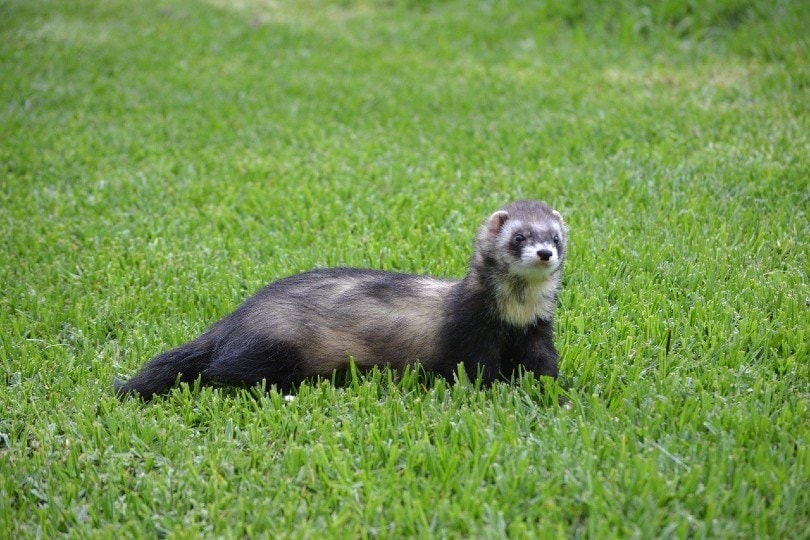
Ferrets In North America
The 18th century was an important time for traveling to other continents. With that, ferrets came to America, and there they did what they do best – they hunted pests. The interesting part about ferrets is that they hunted everything, from mice and rats to rabbits and raccoons. They were small machines made for hunting.
Ferret’s popularity as a pest control grew in America, but not everyone liked them thanks to their smell and weird appearance. So, a new job emerged called “ferret meister”. A ferret meister was a professional ferret handler who would go from one farm to the other to hunt pests for money. Their hunting process was very similar to the one we mentioned in the Balearic Islands.
New Zealand Feral Colony
As you can see, ferrets emerged anywhere rabbits were. In the 1860s, New Zealand imported a list of different species, including rabbits. A decade later, just like everywhere else, the rabbit population exploded and they started destroying vegetation. The biggest issue in New Zealand was that rabbits didn’t have natural predators that could control their numbers. So, New Zealand did what everyone else did—they imported ferrets in 1876. It all started with a small number, but a decade later they imported thousands of units to hunt the growing rabbit population.
But there was one small issue with this solution. Since rabbits didn’t have predators to control their population, ferrets didn’t either. Ferrets became apex predators, attacking rabbits and native birds. New Zealand birds couldn’t protect themselves from ferrets since they couldn’t fly, so their numbers dwindled over the years. The reason why ferrets were able to thrive in the wild was due to the islands’ mild climates and absence of predators, if we don’t include people. That led to establishing of a feral ferret colony in New Zealand.
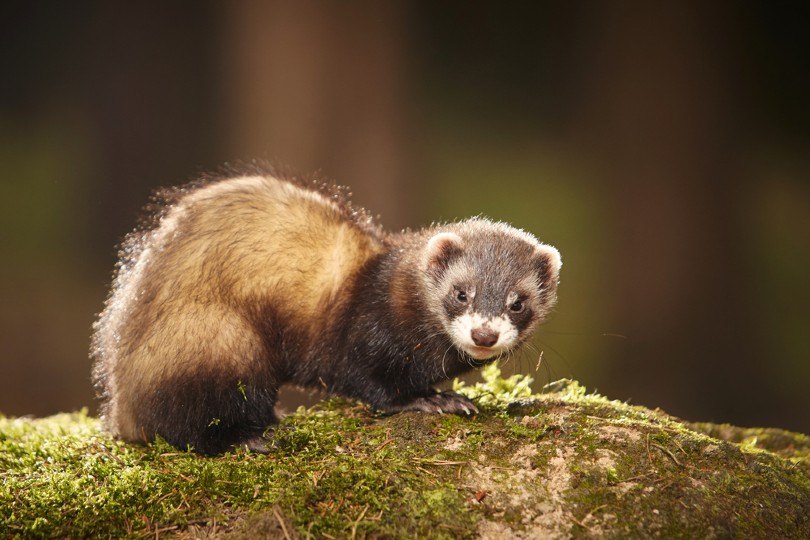
Australian Ferret Situation
Australia had a similar issue with ferrets becoming aggressive predators of other prey besides rabbits, but the country couldn’t establish a feral colony for several reasons. Australia has more extreme weather conditions. It has a much hotter climate and ferrets can’t live easily in an overly hot environment. Also, Australia has predators that can eat ferrets. Some of those predators are dingos, foxes, hawks, and even feral cats. Those two things combined prevented ferrets from establishing a colony.
The 7 Ferrets’ Jobs Throughout Time
Ferrets came a long way from hunting rabbits and other pets to being a pet today. Somewhere along the way, people recognized ferrets as playful and affectionate animals, so they started keeping them as pets. But, before that, ferrets’ many jobs demonstrated how useful those small animals really are.
1. Pest Control
The first and the longest job a ferret had was pest control. It all started with rabbits on the Balearic Islands and through Europe, North America, New Zealand, and Australia, they were small hunting machines that kept crops and other vegetation safe from rabbits, rats, mice, etc.
2. Fur Production
Unfortunately, ferrets have pretty impressive fur on their backs that they have been killed for on many occasions. If we combine that with interesting colors and patterns, we can see why they were interesting to the fur industry. It all started in Europe, it even spread to the United States, but it didn’t last long there. After a while, Europe was the center of fur production. The good thing is that today there is less and less interest in the fur industry, so these animals are increasingly safer from being killed for their fur.

3. Ferrets As Cable Pullers
One of the most interesting jobs a ferret could have was as a cable puller. Ferrets are small, flexible, and love running through tight spaces. So, they were a very useful tool in cable transportation for different industries. They were used by telephone companies, news companies, and other industries. People would put a small harness on a ferret, attach a cable to the harness, and release the ferret in the pipe. The ferret, loving the small space, would run through the pipe (like it would through rabbit tunnels) and on the other end, someone would wait for the ferret to come. Once a ferret exited the pipe, people would remove the cable. This was very useful for humans, but with mechanization, ferrets were replaced with robots in that job position.
4. Ferret Medical Testing
The reason why ferrets are so interesting to medicine and pharmacy is the fact that they can catch the human influenza virus. Naturally, due to that, they were used in different testing for virology, toxicology, pharmacology, and other fields of science. The United States is the country with the highest rate of ferret testing because they have a wide range of farms made for breeding ferrets.

5. Ferret Legging
Ferret legging is one of the most interesting sports you can find and it all started in a pub in England. For this sport, we would need two ferrets and one brave person wearing pants. The game starts once a person places two ferrets inside another person’s pants and closes them so the ferrets can’t escape. Once ferrets are inside, there are two possibilities—they will either go to sleep, or they can bite and scratch their way out. The goal of this game is to last as long as possible without letting the ferrets out. That means a person has to endure ferret bites and scratches. There is even a record for this activity; A man from Yorkshire lasted 5 hours and 26 minutes with two ferrets in his pants.
6. Ferrets in the Movie Industry
Ferrets have cute faces and loveable personalities, so giving them roles in different movies and series is not surprising. They are easy to work with, smart, and can be trained to do various things. That is, they are a part of many projects for big and small screens. They had support roles in movies like Along Came Polly, Kindergarten Cop, smaller but significant roles in the Scorpio series and The Golden Compass movie. They even made a presence in blockbusters like Harry Potter, Lord of the Rings, and Legends Of The Fall.
7. Ferrets As Pets
The last and the newest job ferrets got were becoming household pets. This is their main job in the modern world and they are doing it the best way they can. That is why you can see the increase of ferret owners all over the world. Ferrets are easy to take care of, small, cute, and ferret owners claim that there isn’t a single boring minute with ferrets. We can see that ferret care is improving because their lifespan has prolonged, there are more effective ways to treat medical problems, and there are more products created for ferrets in the pet industry. It seems like their job as a pet has just started and it will last a long time.
Final Thoughts
It is surprising to learn that ferrets have been on our side for 2,500 years. They did various things, but we think that their best job is the current one – being an affectionate, sometimes mischievous pet in homes all over the world.
You may also want to read:
Featured Image Credit: Couperfield, Shutterstock



